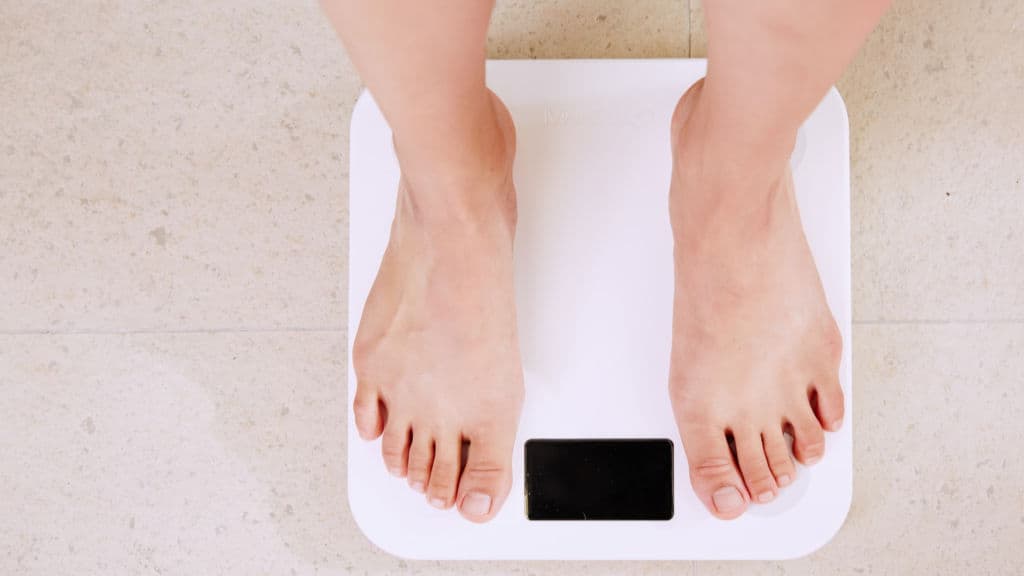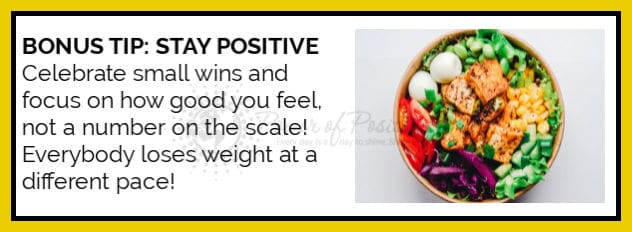The ketogenic diet is taking the world by storm, and there’s a good reason for its always-increasing popularity. These low-carb, high-fat meal plans have a wide range of health benefits, including better cholesterol, improved heart function, and higher degrees of weight loss. The lifestyle is even recommended for seizure reduction in children with epilepsy!
Before you get started with a ketogenic diet, however, there are a few things that you should know while cleaning out your cupboards. There are also a few tips and tricks that you can learn for maximum dietary benefits.
Are you ready to change your life with a keto diet? Grab a notebook and start taking notes!
1. Create a Cheat Sheet
If you’re trying a keto diet for the first time, you might be surprised to learn which foods are allowed and not allowed.
Good:
- Dairy (milk, cheese, butter)
- Leafy greens (spinach, lettuce, broccoli)
- Meats (beef, pork, chicken, lamb, fish)
- Nuts and seeds (peanuts, walnuts, almonds, sunflower seeds, chia seeds)
Bad:
- Fruits (apples, oranges, mangoes, bananas)
- Grains (bread, cereals, rice)
- Sugar (including fruit sugars and natural sugars like honey)
- Starches (potatoes, pasta)
As you can see, a ketogenic diet is pretty restrictive. Drastic results require drastic changes. However, you don’t have to jump into the deep end immediately; you can experiment with “keto-lite” meal plans before you go cold turkey on your favorite lasagna dishes. Getting healthy with a keto diet should be a celebration, not a downer!
2. Prepare Meals and Snacks in Advance
One of the most complex parts of sticking to a diet is being disciplined to prepare healthy meals instead of reaching for low-effort, low-nutrition junk foods.
Fortunately, you can combat these lazy urges by preparing meals and snacks before you need them. You can wash and peel your veggies before freezing them for later. You can whip up some batch meals and stick them in portioned containers for busy days when you don’t feel like cooking.
You know your own habits better than anyone. Anticipate the weaknesses that you’ll have with a keto diet and take measures to prevent them.
3. Get Off the Couch
The whole point of a ketogenic diet is to make your body to burn fat instead of carbs. That’s why your meal plans have more fats and fewer carbs, and that’s why keto diets are so good for weight loss.
Exercise is another way to force your body to burn fat. You don’t have to be a bodybuilder; you can kick-start your metabolic processes with all sorts of low-impact exercises, including walking, jogging, swimming and yoga. It doesn’t matter how you get your blood pumping as long as it’s going strong.
Say no to the remote control. Take a walk around the block instead. Your waistline will thank you, and your keto diet will thrive.
4. Watch Out for the Keto Flu
The keto flu is a condition that can strike people who are trying a low-carb diet for the first time. Its symptoms include nausea, headache, weakness, fatigue, muscle cramps and intense cravings for sugar or other foods.
The cause of the keto flu is shock. Your body freaks out because it isn’t getting the carbs it usually does. This is especially common in people who switch to a keto diet from a junk food diet; as we’ve pointed out before, many breads, pastas, grains, and sugars are a no-go on a keto diet. If you go from pizzas every night to keto every day, your body will require an adjustment period.
The good news is that you can take steps to prevent the keto flu. For example, by upping your magnesium and potassium levels, you’ll be able to reduce the shock to your system when you suddenly cut out carbs. Consider adding a supplement to your keto plan.
5. Make Substitutions in Your Diet
If you’re struggling to take your favorite foods out of your keto diet, you might have better luck with substitutions rather than removals.
For example, let’s say that you love rice. Instead of saying goodbye to your mom’s casserole, learn how to make cauliflower rice instead. It has the same taste and texture as regular rice, but it isn’t a starch, and it can help you with everything from weight loss to keto success.
Another potential substitution is almond flour instead of wheat flour. It’s low-carb and gluten-free, so you’ll check off multiple diet boxes at once and won’t even taste the difference in your favorite recipes!
6. Consider Intermittent Fasting
Intermittent fasting is when you only eat during certain times of the day.
It requires a lot of willpower, but studies have shown that it can have health benefits worth a rumbling stomach. Fasters tend to consume fewer calories on the whole than non-fasters, and fasting can also maximize the production of specific weight loss hormones.
Talk to your doctor and ask about intermittent fasting. You shouldn’t do it without their approval, but if they give you the all-clear, it can be a great way to shed some pounds.
7. Shine a Light on Hidden Carbs
Hidden carbs are the carbs that you don’t expect to see on a nutritional label. They can be found even in healthy foods that are good for you in other ways!
For example, yogurt is a source of hidden carbs. This is especially true in flavored yogurts that come with a lot of additives to mask their naturally tart taste. There are also sneaky, little-known carbs in baked beans, tomato sauce, barbecue sauce, ranch dressing, and protein bars.
You’ll have to decide whether these carb-heavy foods are worth the trade-off for their other health benefits!
8. Utilize MCTs
Medium-chain triglycerides (MCTs) are human-made fats that help with ketone production. As you might be able to tell from the name, ketones are a good thing in a keto diet.
There are many ways that you can incorporate MCTs into your everyday life:
- MCT oils. You can add these consumable oils to tea, coffee, and other drinks. It isn’t recommended that you cook with them; they have a low smoke point, so they’ll start breaking down and losing their efficacy around 320°F.
- MCT powders. These powders are like other supplement powders. Add them to smoothies; sprinkle them over oatmeal; dissolve them in hot drinks.
- Products that include MCTs. These products aren’t necessarily “MCT products,” but they contain the same compounds and will have the same health benefits. For example, coconut oil can be used interchangeably with MCT oil, and you can cook it to boot.
Long story short, MCTs are a good thing in a keto diet, and they’re worth hacking your diet to include them!
9. Steal From Other Diets
Keto diets are compatible with many other diets, and you can cherry-pick the best parts of complimentary meal plans to improve your ketogenic experience.
For example, since keto diets remove wheat products from your diet, many keto recipes are also gluten-free by default. You can invest in some gluten-free cookbooks to keep your dinner ideas from getting stale.
Keto diets can also be vegan or vegetarian. They encourage you to eat veggies, nuts, seeds, and other natural products, so you can easily experiment with vegetarianism while on a ketogenic diet.
10. Look Into Exogenous Ketones
“Exogenous ketones” is a mouthful, but it’s a simple thing. Endogenous ketones are produced inside of your body; exogenous ketones are supplied from the outside. So “exogenous ketones” is just a fancy way of saying “ketones that you get from external sources.”
There are two main ways to get exogenous ketones: salts and esters.
Ketone esters are somewhat rare. They’re liquids that are mostly used for research purposes, so you’ll only see them in the occasional sports drink or imported supplement.
Ketone salts, on the other hand, are readily available for purchase. You can find them in powders, liquids, capsules and many other types of supplements.
If you want to put the keto in your ketogenic diet, consider exogenous ketones. They’ll stimulate your weight loss and burn those fat cells, and you won’t have to wait for your body to produce them naturally.
11. Change Your Coffee Order
You don’t have to give up coffee on a ketogenic diet. It can become of your biggest boosters in a low-carb weight loss plan.
The first thing to know is that coffee can be surprisingly good for you. It’s packed with antioxidants, and it can be used to combat certain inflammatory disorders and cardiovascular diseases. Studies have shown that moderate amounts of coffee can even help you live longer.
As for your keto diet, many coffee additives will fit right in with your nutritional guidelines. Milk, cream and butter are all keto-approved dairy products. You can also add some MCT oil to your lattes.
12. Make Positive Lifestyle Changes
Last but certainly not least, try making your keto diet a part of an overall lifestyle change. Try to sleep more, exercise more, drink water, reduce stress and think positive thoughts.
Be humble. Be grateful. Open your eyes each morning and greet the day with enthusiasm.
A keto diet is a great thing in terms of mental and physical wellness. If the kitchen is the only place you’re making changes, your waistline will be the only thing that reflects the newer, healthier you. Try to transform yourself inside and out with positive changes on multiple fronts.
Final Thoughts on a Making the Ketogenic Diet Easier to Follow
Ketogenic diets can help you turn your life around, but you have to be willing to take a chance and make a change. Are you ready? Yes, you can do it! Let’s get started!



















